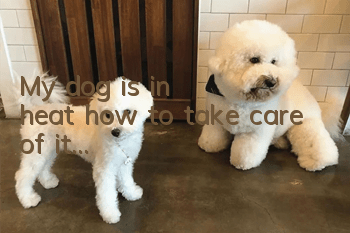Symptoms and Treatments for Dog Breathing Difficulty

Dyspnea is the most common clinical symptom. The main symptoms are shortness of breath, increased frequency, undulating movement of the chest and abdominal muscles, or superficial movements. In severe cases, the back and anus also move with breathing. The basis of treatment is to comprehensively analyze the internal relationship between other systemic symptoms and dyspnea based on clinical examination, laboratory tests, and instrumental examination results to find out the primary disease. This is the foundation of treatment.
[Treatment] The principle of treatment is to treat the original disease, relieve cough and asthma, eliminate phlegm and reduce inflammation, and control allergies and correct acid.
To treat primary cardiogenic dyspnea, use cardiotonics and drugs that nourish the myocardium, such as digitalis preparations, glucose, inosine, vitamin C, etc.; for pulmonary dyspnea, use antibacterial and anti-inflammatory drugs, such as penicillin and amikacin. Star, lincomycin, etc.; for blood-borne dyspnea, such as anemia, blood supplements, such as ferrous sulfate, should be given. Those originating from infectious diseases and parasites shall be treated according to the requirements of infectious diseases and parasitic diseases.
Commonly used cough-relieving drugs include Kebiqing, compound licorice mixture, Kefula, etc.; anti-asthmatic drugs include aminophylline injection, which can be injected intramuscularly or intravenously.
Expectorant and anti-inflammatory are suitable when the sputum is thick and difficult to cough up. Commonly used drugs include ammonium chloride. There are many anti-inflammatory drugs. It is best to use nasal fluid and sputum for drug sensitivity testing. Antibiotics are selected based on the results, and combined with drugs (such as penicillin). (combined with streptomycin) has the best effect.
Allergy control and acid correction: For acute pulmonary edema, emphysema, etc. caused by allergic reactions, use anti-allergic drugs: chlorpheniramine 5 to 10 mg, intramuscular injection. Hydrocortisone, 5 to 20 mg, intravenous infusion, dexamethasone, 0.25 to 5 mg, intramuscular injection or intravenous infusion. Difficulty breathing, due to reduced CO2 discharge, can easily cause respiratory acidosis. Alkali preparations should be added in time, such as intravenous infusion of 10 to 50 ml of 5% sodium bicarbonate.
Recommended Good Things
Aineng Pet Odor Eliminating Disinfectant can effectively remove body odor/feces odor and other odor molecules! Effective in treating skin diseases caused by fungi/bacteria! Can kill parvovirus/canine distemper virus/coronavirusetc!
It is edible grade for pets, does not contain fragrances, does not contain chemicals, can be sprayed directly, and is harmless to human pets!
Consultation: 13028809308 (WeChat synchronization)
Scan the QR code on WeChat to enter the purchase
- How to train a Caucasian to be obedient? Just read here to find out!
- What should I do if my Alaskan dog has indigestion? How to prevent it?
- How to train a dog to buy things for its owner
- What should you pay attention to during your dog’s menstruation period? What should you pay attention to during your dog’s menstruation period!
- How to train Doberman Pinscher? What should we pay attention to during training?
- What is kidney failure in dogs? !
- 5 factors that determine the price of a husky
- Are owners still worried about dogs peeing indiscriminately?
- How to treat lobular pneumonia in dogs
- How to solve dog body odor



